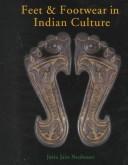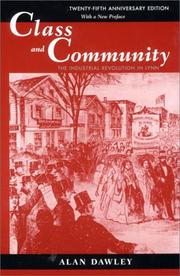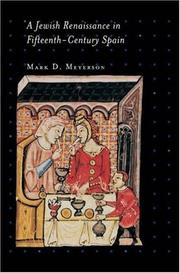| Listing 1 - 9 of 9 |
Sort by
|
Book

ISBN: 9789490800994 Year: 2018 Publisher: Ghent : Art Paper Editions,
Abstract | Keywords | Export | Availability | Bookmark
 Loading...
Loading...Choose an application
- Reference Manager
- EndNote
- RefWorks (Direct export to RefWorks)
Manufacturing technologies --- shoes [footwear] --- anthropology --- crafts [art genres] --- cobblers --- footwear
Digital
ISBN: 9789490800994 Year: 2018 Publisher: [Gent] Art Paper Editions
Abstract | Keywords | Export | Availability | Bookmark
 Loading...
Loading...Choose an application
- Reference Manager
- EndNote
- RefWorks (Direct export to RefWorks)
What makes Catherine Willems work on future footwear so appealing is its promise to leapfrog more than 150 years of industrialization, with all its attendant afflictions - environmental destruction, depletion of natural resources, extreme global inequality - and bring us straight into a cleaner and fairer future, while taking cues from ancient knowledge and craft. The research brings three disparate fields together: traditional footwear in very different indigenous cultures (Kolhapuri in India, Sami in Finland, and Ju|hoansi in Namibia), the biomechanics of the human foot, and advanced technology for 3D measuring and printing. The depth and seriousness of the exploration in each field results in a richness of data and information which has only just started to yield its first outcomes. -- Christine De Baan In this new book presenting cobblers from India, Finland, Belgium, the UK, and Namibia, Els Roelandt and Catherine Willems present a refreshing and much-needed vision on anthropology, craftmanship, and design, clearly depicting the integrated roles of artisans, scientists, and industry partners. -- Rik Pinxten
Manufacturing technologies --- shoes [footwear] --- anthropology --- crafts [art genres] --- cobblers --- footwear

ISBN: 0921638132 1890206202 8185822697 Year: 2000 Publisher: Toronto The Bata shoe museum
Abstract | Keywords | Export | Availability | Bookmark
 Loading...
Loading...Choose an application
- Reference Manager
- EndNote
- RefWorks (Direct export to RefWorks)
On the religious and historical significance of feet and footwear in Indian culture.
Footwear industry --- Shoemakers --- Boot and shoe workers --- Cobblers --- Cordwainers --- Artisans --- Clothing trade
Book
ISBN: 1785391623 1780671997 9781780671994 9781785391620 9781856697453 1856697452 Year: 2012 Publisher: London, United Kingdom
Abstract | Keywords | Export | Availability | Bookmark
 Loading...
Loading...Choose an application
- Reference Manager
- EndNote
- RefWorks (Direct export to RefWorks)
Aki Choklat explores the footwear design process, explaining the differences between the anatomy of the foot and the anatomy of a shoe, showing how one constrains the other, before moving onto the research and design development processes and the art of creating a complete collection.
Shoes --- Footwear --- Footwear industry --- Shoemakers --- Clothing trade --- Boots and shoes --- Foot wear --- Clothing and dress --- Boot and shoe workers --- Cobblers --- Cordwainers --- Artisans --- Design. --- Vocational guidance.

ISBN: 0674004310 0674133900 0674133951 0674030281 9780674030282 9780674004313 Year: 2021 Publisher: Cambridge, MA
Abstract | Keywords | Export | Availability | Bookmark
 Loading...
Loading...Choose an application
- Reference Manager
- EndNote
- RefWorks (Direct export to RefWorks)
In this twenty-fifth anniversary edition of his Bancroft Prize-winning book, Dawley reflects once more on labor and class issues, poverty and progress, and the contours of urban history in the city of Lynn, Massachusetts, during the rise of industrialism in the early nineteenth century.
Shoemakers --- Shoe industry --- Social classes --- Class distinction --- Classes, Social --- Rank --- Boot and shoe workers --- Cobblers --- Cordwainers --- Caste --- Estates (Social orders) --- Social status --- Class consciousness --- Classism --- Social stratification --- Footwear industry --- Artisans
Book
ISBN: 0585091714 9780585091716 1438402252 9781438402253 Year: 1981 Publisher: Albany State University of New York Press
Abstract | Keywords | Export | Availability | Bookmark
 Loading...
Loading...Choose an application
- Reference Manager
- EndNote
- RefWorks (Direct export to RefWorks)
Lynn, Massachusetts, once the leading shoe manufacturing city of the United States, was in many ways a model of the industrial city that much of America was to become. This study of the early industrial revolution in Lynn focuses on the journeymen shoemakers, leading participants in the making of the institutions, ideas, and events that form central themes in the history of working people in America. Spanning the time period from just after the American Revolution to the Civil War, it places special emphasis on the social changes that accompany industrialization, and the impact of those changes on workers. It examines the shoe industry and shoemaking in detail: wages and conditions of work, social clubs and political parties, strikes as well as schools, and trade unions as well as temperance societies. It also explores property ownership and social mobility, the origins and nature of class consciousness and class ideology, and the relations between workers and manufacturers across the spectrum of social institutions. This study of the industrial revolution in a single community combines labor history and social history, revealing the fullness and breadth in the experience of the working people.
Shoemakers --- Working class --- Footwear industry --- Clothing trade --- Commons (Social order) --- Labor and laboring classes --- Laboring class --- Labouring class --- Working classes --- Social classes --- Labor --- Boot and shoe workers --- Cobblers --- Cordwainers --- Artisans --- History. --- Employment --- Lynn (Mass.) --- Saugus (Mass. : Town) --- Social conditions.
Book
ISBN: 9781421425856 1421425858 9781421425849 142142584X Year: 2018 Publisher: Baltimore
Abstract | Keywords | Export | Availability | Bookmark
 Loading...
Loading...Choose an application
- Reference Manager
- EndNote
- RefWorks (Direct export to RefWorks)
In 'Treasures Afoot', Kimberly S. Alexander introduces readers to the history of the Georgian shoe. Presenting a series of stories that reveal how shoes were made, sold, and worn during the long eighteenth century, Alexander traces the fortunes and misfortunes of wearers as their footwear was altered to accommodate poor health, flagging finances, and changing styles. She explores the lives and letters of clever apprentices, skilled cordwainers, wealthy merchants, and elegant brides, taking readers on a colorful journey from bustling London streets into ship cargo holds, New England shops, and, ultimately, to the homes of eager consumers. We trek to the rugged Maine frontier in the 1740s, where an aspiring lady promenades in her London-made silk brocade pumps; sail to London in 1765 to listen in as Benjamin Franklin and John Hose caution Parliament on the catastrophic effects of British taxes on the shoe trade; move to Philadelphia in 1775 as John Hancock presides over the Second Continental Congress while still finding time to order shoes and stockings for his fiancee's trousseau; and travel to Portsmouth, New Hampshire, in 1789 to peer in on Sally Brewster Gerrish as she accompanies President George Washington to a dance wearing a brocaded silk buckle shoe featuring a cream ground and metallic threads.
Shoes --- Shoemakers --- Clothing and dress --- Fashion --- Style in dress --- Apparel --- Clothes --- Clothing --- Clothing and dress, Primitive --- Dress --- Dressing (Clothing) --- Garments --- Beauty, Personal --- Manners and customs --- Undressing --- Boot and shoe workers --- Cobblers --- Cordwainers --- Artisans --- Boots and shoes --- Footwear --- History --- United States --- Great Britain --- Social life and customs --- Colonies --- E-books
Book
ISBN: 8886166052 9788886166058 Year: 1993 Volume: 49 Publisher: Venezia : Istituto veneto di scienze, lettere ed arti,
Abstract | Keywords | Export | Availability | Bookmark
 Loading...
Loading...Choose an application
- Reference Manager
- EndNote
- RefWorks (Direct export to RefWorks)
Shoemakers --- Cordonniers --- History --- Histoire --- Venice (Italy) --- Venise (Italie) --- Economic conditions --- Social conditions --- Conditions économiques --- Conditions sociales --- -Shoemakers --- -Boot and shoe workers --- Cobblers --- Cordwainers --- Artisans --- -History --- -Venice (Italy) --- -Economic conditions --- Conditions économiques --- Shoemakers - Italy - Venice - History - 18th century --- Shoemakers - Italy - Venice - History - 17th century --- Venice (Italy) - Social conditions - To 1797 --- Venice (Italy) - Economic conditions --- Cuirs et peaux --- Venise (italie) --- Industrie --- Conditions economiques --- 17e-18e siecles

ISBN: 0691117497 Year: 2010 Publisher: Princeton : Princeton University Press,
Abstract | Keywords | Export | Availability | Bookmark
 Loading...
Loading...Choose an application
- Reference Manager
- EndNote
- RefWorks (Direct export to RefWorks)
This book significantly revises the conventional view that the Jewish experience in medieval Spain--over the century before the expulsion of 1492--was one of despair, persecution, and decline. Focusing on the town of Morvedre in the kingdom of Valencia, Mark Meyerson shows how and why Morvedre's Jewish community revived and flourished in the wake of the horrible violence of 1391. Drawing on a wide array of archival documentation, including Spanish Inquisition records, he argues that Morvedre saw a Jewish "renaissance." Meyerson shows how the favorable policies of kings and of town government yielded the Jewish community's demographic expansion and prosperity. Of crucial importance were new measures that ceased the oppressive taxation of the Jews and minimized their role as moneylenders. The results included a reversal of the credit relationship between Jews and Christians, a marked amelioration of Christian attitudes toward Jews, and greater economic diversification on the part of Jews. Representing a major contribution to debates over the Inquisition's origins and the expulsion of the Jews, the book also offers the first extended analysis of Jewish-converso relations at the local level, showing that Morvedre's Jews expressed their piety by assisting Valencia's conversos. Comparing Valencia with other regions of Spain and with the city-states of Renaissance Italy, it makes clear why this kingdom and the town of Morvedre were so ripe for a Jewish revival in the fifteenth century.
Jews --- Juifs --- Civilization. --- Civilisation --- Spain --- Valencia (Spain : Region) --- Espagne --- Valence (Espagne : Région) --- Civilization --- Jewish influences. --- Ethnic relations. --- Influence juive --- Relations interethniques --- 933.73 --- Hebrews --- Israelites --- Jewish people --- Jewry --- Judaic people --- Judaists --- Ethnology --- Religious adherents --- Semites --- Judaism --- Geschiedenis van het Joodse volk: diaspora in Spanje, Portugal, Zuid-Frankrijk --- 933.73 Geschiedenis van het Joodse volk: diaspora in Spanje, Portugal, Zuid-Frankrijk --- Valence (Espagne : Région) --- País Valenciano (Spain) --- País Valencià (Spain) --- Comunidad Valenciana (Spain) --- Comunitat Valenciana (Spain) --- Generalidad Valenciana (Spain) --- Generalitat Valenciana (Spain) --- Comunidad Autónoma Valenciana (Spain) --- Comunidad de Valencia (Spain) --- Abenafrit, Samuel. --- Abenardut, Alatzar. --- Abencabal, Jucef. --- Abenrabi family. --- Adzoni family. --- Agí, Abraham. --- Asseyo family. --- Borriana. --- Boïl family. --- Cagliari, Sardinia. --- Christians. --- Eiximenis, Francesc. --- El Rau, Conort. --- Espriu, Salvador. --- Façan family. --- Gallego family. --- Guerau, Anthoni. --- Hacker, Joseph. --- Hebrew language. --- Jacoti, Gento. --- Jewish-Muslim relations. --- Legem, Abraham. --- Malequi family. --- Moriella, Jaume. --- Muslims. --- Najari, Saçon. --- Natera, Violant. --- Olives, Baltasar. --- Onda. --- Orriols, Vicent. --- Pardo, Joan. --- Quatorze, Gento. --- Rodrich, Pastor. --- agriculture. --- apprenticeship. --- bailiffs general. --- censalistas. --- cobblers. --- credit system. --- disputation, theological. --- dowries, Jewish. --- family law. --- famine. --- feuding. --- inheritance. --- inquisition. --- judges, Jewish. --- land leasing. --- legal system. --- maestre racional. --- messianism. --- physicians. --- plague. --- poor, Jewish.
| Listing 1 - 9 of 9 |
Sort by
|

 Search
Search Feedback
Feedback About UniCat
About UniCat  Help
Help News
News